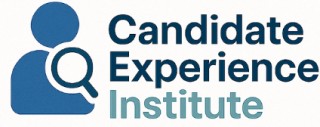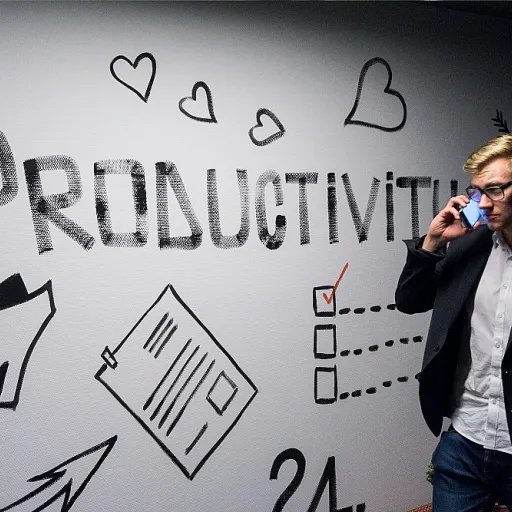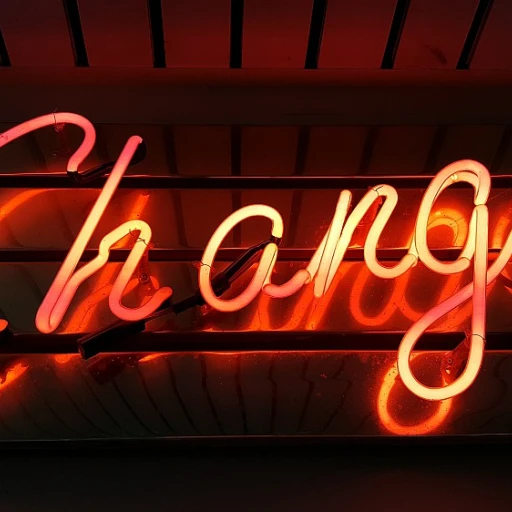Understanding DEIA Training
Exploring the Foundations of Diversity, Equity, Inclusion, and Accessibility Training
In recent years, the concept of Diversity, Equity, Inclusion, and Accessibility (DEIA) training has gained significant traction across various sectors, including government organizations, businesses, and educational institutions. At its core, DEIA training focuses on reshaping workplace culture by fostering an inclusive work environment where every employee feels valued and engaged.
To fully comprehend DEIA training, one must first understand the components that make it up. Diversity refers to the acknowledgment and appreciation of differences among individuals, whether these differences pertain to race, gender, age, or other factors. Equity, on the other hand, ensures that individuals have equal access to opportunities and resources, while inclusion signifies the active involvement and acceptance of everyone in the workplace. Accessibility adds another layer by addressing and removing physical and digital barriers within organizations.
Federal agencies and businesses are increasingly recognizing the importance of DEIA efforts, as they contribute to building a more positive workplace culture and bolster the effectiveness of decision making by integrating diverse perspectives. Indeed, the implementation of diverse inclusive practices has shown to attract top talent, enhance employee satisfaction, and promote creativity and problem solving.
A critical aspect of DEIA is training programs aimed at addressing unconscious bias and promoting a broader understanding of diversity inclusion. Effective DEIA training equips employees with tools and strategies to overcome biases and cultivates an environment where everyone can thrive, thereby setting the foundation for a more inclusive organization.
Organizations that have embraced DEIA training often report improvements in employment practices and employee engagement. Moreover, federal mandates, such as executive orders emphasizing affirmative action and equal opportunity, further underscore the necessity for robust DEIA training programs.
To learn more about how talent assessments are enhanced through diversity training, consider exploring
effective talent assessments. This resource offers valuable insights into the integration of DEIA efforts within candidate experience initiatives.
The Impact of DEIA on Candidate Experience
DEIA's Transformative Impact on Candidates
The integration of training in diversity, equity, inclusion, and accessibility (DEIA) plays a pivotal role in shaping the candidate experience. Such training not only elevates the environment within recruitment processes but also supports the creation of a more inclusive business culture. By prioritizing diversity and inclusion, organizations can foster a better workplace culture, which in turn attracts top talent from a wide range of backgrounds.
Implementing DEIA training programs within recruitment processes offers significant benefits to both potential employees and the organization. Prospective candidates perceive the company as an equal opportunity workplace committed to welcoming diverse talents across all levels of employment. This sense of belonging and respect is crucial in enhancing the candidate journey.
Diverse and inclusive training initiatives, such as those focusing on unconscious bias, are essential. They ensure that hiring decisions are made based on merit and equity, rather than preconceived notions, establishing a fair and robust employment environment. Such efforts help to dismantle barriers to opportunities and promote affirmative action within hiring practices.
Federal agencies and various organizations are already incorporating DEIA training into their recruitment strategies in response to executive orders promoting diversity equity inclusion in the workplace. These efforts underline the importance of cultivating a diverse inclusive work environment that is conducive to long-term success and growth.
To further explore how pre-employment screening influences the candidate experience, you can understand its nuanced role in detail. Through such comprehensive approaches, the ripple effect of DEIA programs extends beyond recruiting and into establishing enduring, inclusive workplace practices.
Implementing DEIA Training in Recruitment
Integrating DEIA Training into the Hiring Process
Successfully implementing DEIA training in recruitment is paramount for businesses committed to fostering a diverse and inclusive workplace. This commitment begins with the establishment of training programs that emphasize diversity, equity, inclusion, and accessibility (DEIA), reflecting the values of the organization while adhering to federal guidelines and executive orders.
An effective strategy for incorporating DEIA training involves the following steps:
- Develop Comprehensive Diversity Programs: Tailor training programs that address unconscious bias and highlight the importance of equity and inclusion. This helps employees at all levels understand the nuances of affirmative action and equal opportunity, cultivating a work environment that values diverse perspectives.
- Engage Stakeholders: Involve key stakeholders from different levels of the organization, including HR, management, and employees, in crafting and delivering DEIA efforts. This collaborative approach ensures that the training aligns with the company’s culture and business goals.
- Continuous Learning Opportunities: Implement ongoing training initiatives that keep up with evolving best practices in diversity inclusion. Regular sessions reinforce the commitment to an inclusive workplace culture and adapt to the changing needs of the business landscape.
- Assess and Adapt: Regularly measure the effectiveness of DEIA training and make necessary adjustments. This ensures the programs remain relevant and impactful, promoting a more inclusive hiring process that aligns with the organization's mission.
These strategic implementations not only enhance the candidate experience but also contribute to building a diverse inclusive workplace. Organizations that prioritize DEIA training as part of their recruitment efforts are better positioned to attract, hire, and retain top talent.
For further insights into optimizing the candidate experience, you may explore more about
effective candidate experience surveys. This resource elaborates on refining the recruitment process to better accommodate and engage potential candidates by incorporating DEIA principles.
Challenges in DEIA Training
Overcoming Barriers in DEIA Initiatives
Implementing DEIA (Diversity, Equity, Inclusion, and Accessibility) training within organizations presents its own set of challenges. Companies often encounter resistance or difficulty due to deeply ingrained workplace culture. Understanding and addressing these barriers is crucial in cultivating a truly diverse and inclusive environment.
Firstly, incorporating DEIA training in organizations necessitates an awareness of unconscious bias. Many employees and decision-makers might unintentionally harbor biases that affect recruitment and employment opportunities. Tackling these biases involves not only diversity training but also a shift in corporate culture. Effective training programs can aid in reshaping perspectives and encouraging an equitable workplace.
Embedding DEIA principles also requires confronting the complexities of existing practices. Many federal agencies and organizations adhere to long-established systems that may inadvertently hinder diversity and inclusion efforts. Facilitating change within these established structures involves proactive measures, such as revising hiring practices and promoting inclusive decision-making.
Additionally, securing buy-in from all levels of an organization is essential yet challenging. Leadership and employees must collectively embrace DEIA efforts to effect meaningful change in workplace culture. Programs designed for leadership can address this, fostering an inclusive mindset that trickles down through all tiers.
Moreover, organizations must ensure DEIA initiatives align with broader business objectives. This alignment is crucial to maintaining momentum and securing resources for continued growth. By integrating these efforts with federal affirmative action and equal opportunity mandates, companies can create a consistent framework for ongoing DEIA integration.
Challenges in DEIA training are substantial, but not insurmountable. With strategic implementation and a commitment to inclusivity, organizations can overcome these hurdles and achieve a more diverse and equitable work environment.
Measuring the Success of DEIA Training
Evaluating the Effectiveness of DEIA Training Initiatives
When it comes to measuring the success of DEIA training, organizations must consider several critical factors that highlight its impact on candidate experiences. Primarily, the transformation in workplace culture is a significant indicator. DEIA training programs should foster a diverse, inclusive work environment, manifesting in greater employee satisfaction and retention rates. By embracing diversity equity and inclusion, businesses can create an improved sense of belonging amongst employees.
One effective method for assessing the success of these training initiatives is through comprehensive feedback from employees and candidates. Their insights can convey the efficacy of the training in cultivating a truly inclusive culture. Regular surveys and focus groups can serve as valuable tools for collecting such data, helping organizations understand the nuances of their work environment.
Furthermore, human resources departments can utilize metrics such as diversity hiring rates and promotion rates for underrepresented groups. These metrics focus on equal opportunity and can provide a quantifiable view of the impact of DEIA efforts. By tracking the progression and success of diverse candidates within the organization, companies can showcase their dedication to equity inclusion and diversity in employment practices.
Another aspect to consider is the reduction in unconscious bias in decision making. As organizations implement DEI training, it should result in more equitable recruitment and promotional opportunities. Training designed to address unconscious bias can make recruitment processes more inclusive, paving the way for diverse inclusive workplaces.
Finally, federal agencies and other bodies that have implemented DEIA efforts under various executive orders often set benchmarks for best practices within the industry. Bringing in insights from these agencies helps organizations remain accountable and committed to their diversity inclusion goals.
Through these evaluation methods, organizations can continually improve their DEIA programs, ensuring that they not only meet current standards but also anticipate future trends that may shape candidate experiences.
Future Trends in DEIA and Candidate Experience
Evolution of DEIA Practices and Their Influence on the Hiring Landscape
The future of Candidate Experience is closely intertwined with the advancements in DEIA (Diversity, Equity, Inclusion, and Accessibility) initiatives. As organizations increasingly incorporate robust diversity training and inclusive practices, the transformation within workplaces becomes evident. Federal agencies and private sector organizations alike recognize that a diverse, equitable, and inclusive environment not only enriches the workplace culture but also strengthens business outcomes.
One of the notable trends is the shift towards designing comprehensive DEIA training programs tailored to address unconscious bias and affirm the commitment to affirmative action. These programs strive to create opportunities for all employees, promoti ng a culture where everyone feels valued and heard. As best practices evolve, so does the emphasis on equal opportunity, ensuring that recruitment processes are transparent and accessible to a broader range of applicants.
Moreover, the influx of DEIA efforts driven by executive orders and federal guidelines highlights a commitment to fostering diverse inclusive work environments. In line with this, organizations are prioritizing the integration of digital tools and resources that support equity inclusion and promote diversity equity across hiring processes.
As the demand for inclusive workplaces continues to grow, businesses are recognizing the need to measure the success of their DEIA initiatives. This includes evaluating the impact of diversity inclusion on candidate experience and aligning their strategies with the evolving expectations of job seekers. Employers who actively engage in these efforts not only enhance their brand reputation but also position themselves as leaders in creating inclusive workplaces.
Overall, the ongoing evolution of DEIA practices promises to usher in an era of transformative change, where diverse and inclusive environments are the norm rather than the exception, paving the way for enriched business and employee outcomes.














